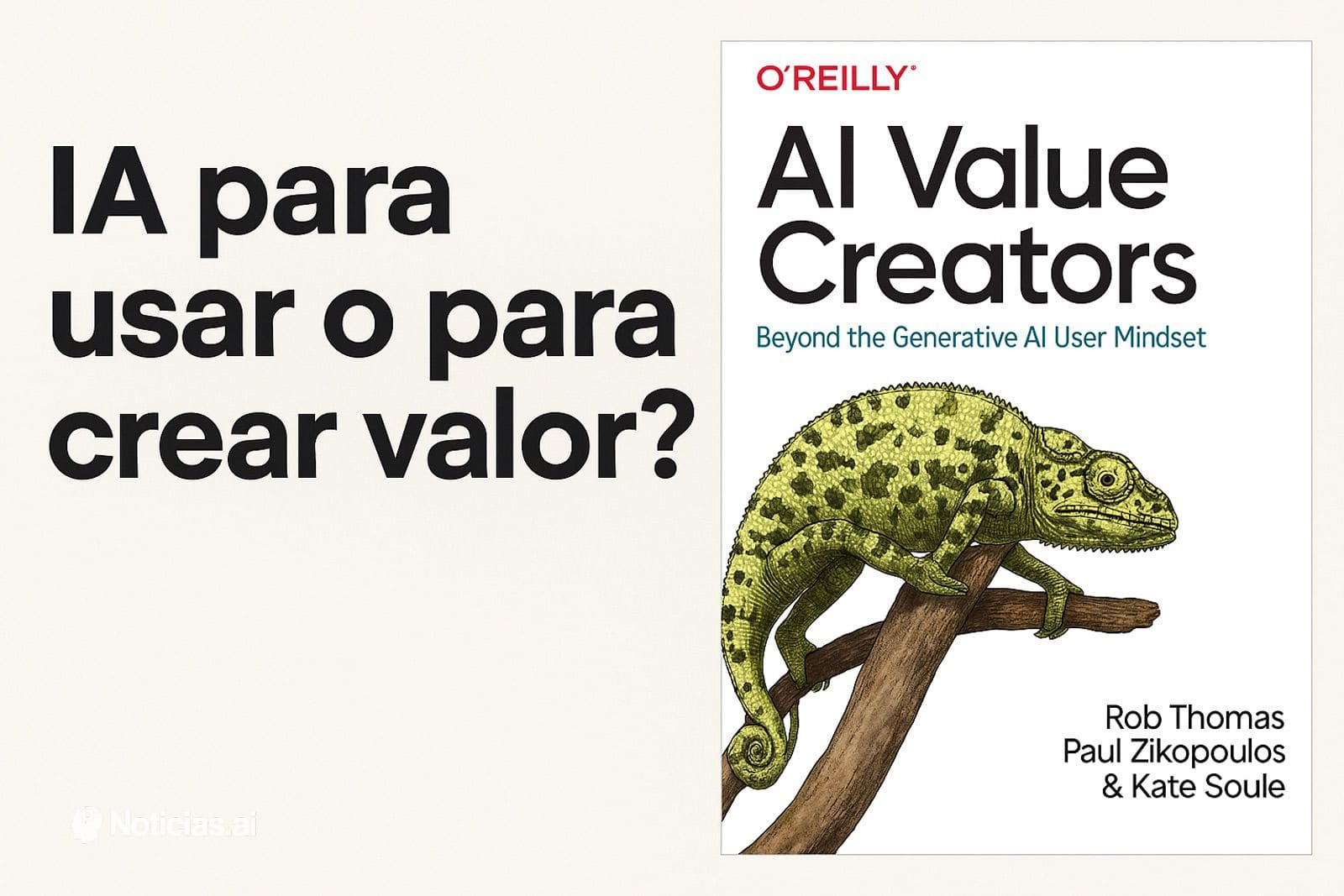The tech giant has launched the book “AI Value Creators,” a manifesto that distinguishes between companies that adopt Artificial Intelligence as a mere tool and those that turn it into a motor for transformation and competitive advantage.
IBM has issued a warning and an opportunity in the form of a book: the revolution of Artificial Intelligence is no longer about whether to adopt it, but how to adopt it. Under the title AI Value Creators, this free resource accessible to any organization proposes a clear distinction that is shaping the new business landscape: companies that simply use AI and companies that create value with it.
The document, authored by Rob Thomas (Senior Vice President at IBM), Paul Zikopoulos (data and AI expert), and Kate Soule (leader of IBM Research’s AI acceleration team), not only summarizes the most effective strategies for implementing AI but also prompts deep reflection on the role technology should play in the immediate future of business strategy.
What type of company are you? AI User vs AI Value Creator
The book poses a crucial question to any executive: Is your company using AI as a passive consumer, or is it shaping it to build sustainable advantages? From this premise, it distinguishes between two approaches:
- AI Users: These are companies that utilize tools with embedded AI—such as virtual assistants, ERP systems with predictive modules, or SaaS services that integrate AI. This model allows for quick adoption and improved efficiency but does not result in real differentiation. Furthermore, it often involves high dependency on external providers.
- AI Value Creators: These are organizations that develop or customize their own models, trained with internal data. They have control over their data, design solutions tailored to their processes, and generate competitive advantages that are hard to replicate. This approach requires a higher initial investment but offers strategic long-term returns.
“The real value lies in the data that only you possess”
One of the most powerful ideas in the book is that each company’s internal data—those not publicly available and reflecting years of experience, customer behavior, operations, and processes—are the true goldmine. However, to convert this data into value, one must go beyond merely consuming generic AI.
In the authors’ words: “If you use the same AI as everyone else, you will get the same results as everyone else. The differential value is built by you, with your data, your processes, and your knowledge.”
Real Cases: L’Oréal, a Factory of Customized AI
AI Value Creators includes concrete examples of companies that have embraced this approach. L’Oréal, for instance, has collaborated with IBM to develop AI models trained with decades of data on ingredients, formulas, and customer preferences. This has allowed them to accelerate innovation in cosmetic products, optimize their supply chain, and create hyper-personalized experiences—all without relying on generic APIs or ceding control of their know-how.
The Risks of the Dependent Model
The book does not criticize the AI User model but does warn of its limitations. The primary risk is commoditization: if everyone uses the same tool, no one stands out. Additionally, many AI platforms collect usage data that then feed their own models, which implies an indirect ceding of strategic value.
There is also a risk of vendor lock-in: once critical processes depend on an external proprietary model, switching providers becomes a complex, costly, and often unfeasible task.
The Middle Path: Scalable Hybrid Intelligence
In light of this dichotomy, IBM proposes a mixed approach: automate everything standard with existing solutions, but build internally anything that defines the company’s value proposition. This does not mean developing AI from scratch, but rather leveraging open platforms, using adaptable pre-trained models, and maintaining control of data flow.
This approach allows for increased speed without losing sovereignty or differentiation capacity. Moreover, it is compatible with emerging regulations on data protection, responsible AI, and sustainability.
The Netscape Moment for AI
According to the authors, generative AI is currently at a turning point reminiscent of Netscape’s early days in the internet: a technology that radically changes the business landscape. Organizations that learn to master it—not just consume it—will be the ones that make a difference in the coming years.
Hence, the title of the book: adopting AI is not enough. One must become an AI Value Creator.
An Open and Free Resource
AI Value Creators is available for free download on IBM’s website and has been designed as a practical tool for business leaders, CIOs, and innovation managers. It includes strategic frameworks, practical recommendations, real case analyses, and guidelines for evaluating AI maturity within the organization.
References: Book available for free download in PDF. Buy printed copy on Amazon.
via: AI News.

